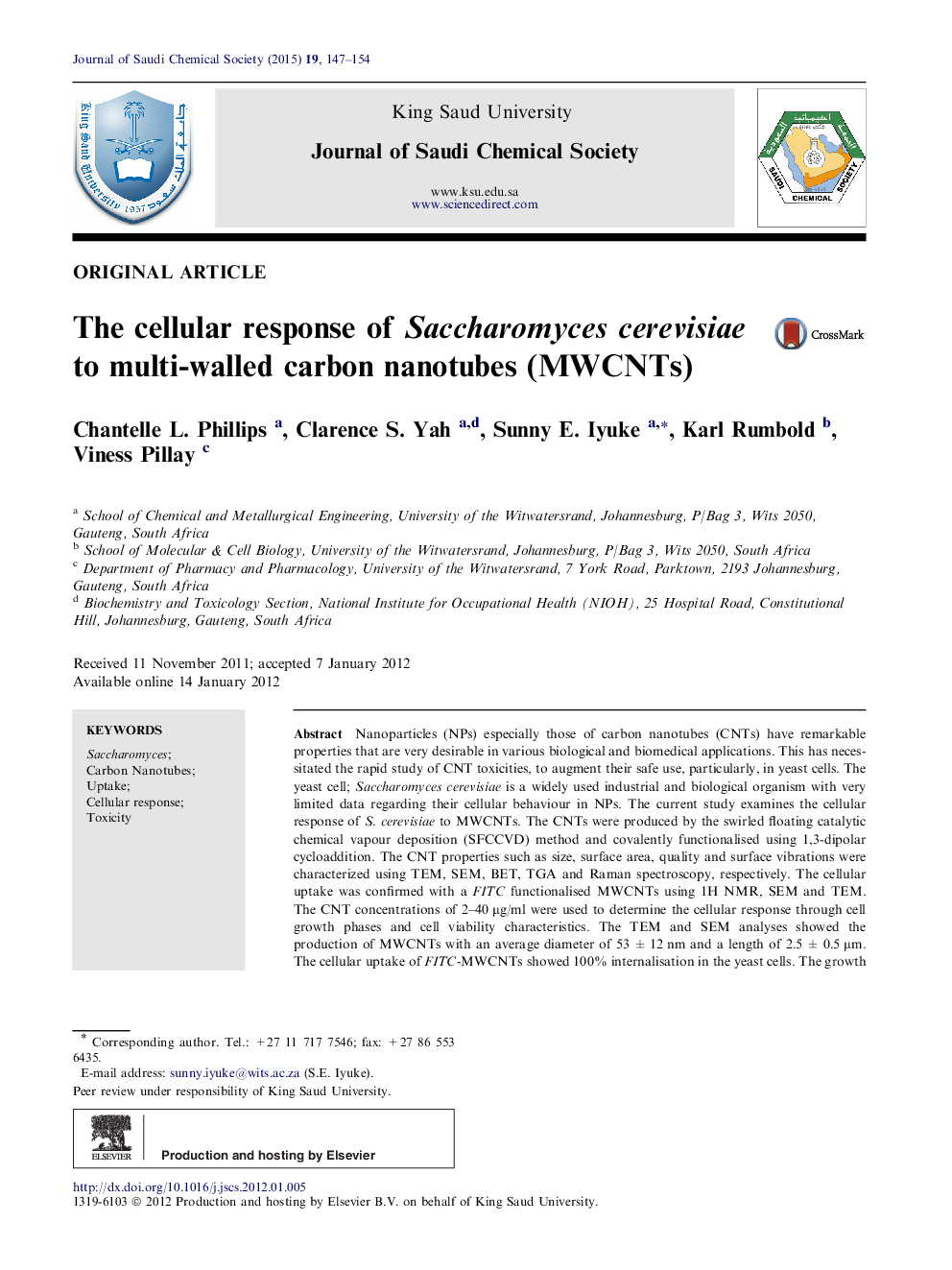| Article ID | Journal | Published Year | Pages | File Type |
|---|---|---|---|---|
| 229554 | Journal of Saudi Chemical Society | 2015 | 8 Pages |
Nanoparticles (NPs) especially those of carbon nanotubes (CNTs) have remarkable properties that are very desirable in various biological and biomedical applications. This has necessitated the rapid study of CNT toxicities, to augment their safe use, particularly, in yeast cells. The yeast cell; Saccharomyces cerevisiae is a widely used industrial and biological organism with very limited data regarding their cellular behaviour in NPs. The current study examines the cellular response of S. cerevisiae to MWCNTs. The CNTs were produced by the swirled floating catalytic chemical vapour deposition (SFCCVD) method and covalently functionalised using 1,3-dipolar cycloaddition. The CNT properties such as size, surface area, quality and surface vibrations were characterized using TEM, SEM, BET, TGA and Raman spectroscopy, respectively. The cellular uptake was confirmed with a FITC functionalised MWCNTs using 1H NMR, SEM and TEM. The CNT concentrations of 2–40 μg/ml were used to determine the cellular response through cell growth phases and cell viability characteristics. The TEM and SEM analyses showed the production of MWCNTs with an average diameter of 53 ± 12 nm and a length of 2.5 ± 0.5 μm. The cellular uptake of FITC-MWCNTs showed 100% internalisation in the yeast cells. The growth curve responses to the MWCNT doses showed no significant differences at P > 0.05 on the growth rate and viability of the S. cerevisiae cells.
